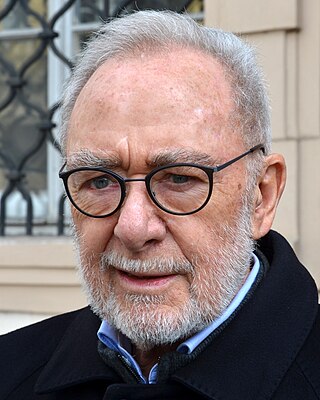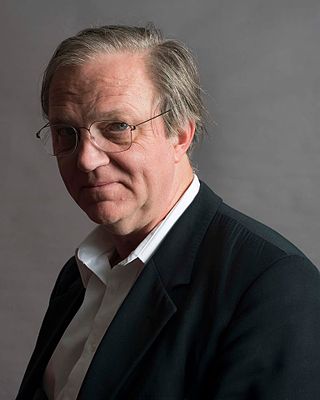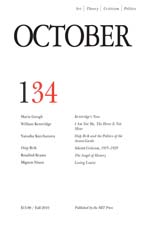
In the arts and in literature, the term avant-garde identifies a genre of art, an experimental work of art, and the experimental artist who created the work of art, which usually is aesthetically innovative, whilst initially being ideologically unacceptable to the artistic establishment of the time. The military metaphor of an advance guard identifies the artists and writers whose innovations in style, form, and subject-matter challenge the artistic and aesthetic validity of the established forms of art and the literary traditions of their time; thus how the artists who created the anti-novel and Surrealism were ahead of their times.

Joseph Heinrich Beuys was a German artist, teacher, performance artist, and art theorist whose work reflected concepts of humanism, sociology, and, with Heinrich Böll, Johannes Stüttgen, Caroline Tisdall, Robert McDowell, and Enrico Wolleb, created the Free International University for Creativity & Interdisciplinary Research (FIU). He previously in his talks and performances also formed The Party for Animals and The Organisation for Direct Democracy. He was a member of a Dadaist art movement Fluxus and singularly inspirational in developing of Performance Art, called Kunst Aktionen, alongside Wiener Aktionismus that Allan Kaprow and Carolee Schneemann termed Art Happenings. Today, internationally, the largest performance art group is BBeyond in Belfast, led by Alastair MacLennan who knew Beuys and like many adapts Beuys's ethos.

Postmodern art is a body of art movements that sought to contradict some aspects of modernism or some aspects that emerged or developed in its aftermath. In general, movements such as intermedia, installation art, conceptual art and multimedia, particularly involving video are described as postmodern.

Gerhard Richter is a German visual artist. Richter has produced abstract as well as photorealistic paintings, and also photographs and glass pieces. He is widely regarded as one of the most important contemporary German artists and several of his works have set record prices at auction.

Marcel Broodthaers was a Belgian poet, filmmaker, and visual artist.
Hans Haacke is a German-born artist who lives and works in New York City. Haacke is considered a "leading exponent" of Institutional Critique.

Harold Foss "Hal" Foster is an American art critic and historian. He was educated at Princeton University, Columbia University, and the City University of New York. He taught at Cornell University from 1991 to 1997 and has been on the faculty at Princeton since 1997. In 1998 he received a Guggenheim Fellowship.
Rosalind Epstein Krauss is an American art critic, art theorist and a professor at Columbia University in New York City. Krauss is known for her scholarship in 20th-century painting, sculpture and photography. As a critic and theorist she has published steadily since 1965 in Artforum,Art International and Art in America. She was associate editor of Artforum from 1971 to 1974 and has been editor of October, a journal of contemporary arts criticism and theory that she co-founded in 1976.
Thierry de Duve is a Belgian professor of modern art theory and contemporary art theory, and both teaches and publishes books in the field. He is an art critic and curates exhibitions.

Robert Storr is an American curator, critic, painter, and writer.
In art, institutional critique is the systematic inquiry into the workings of art institutions, such as galleries and museums, and is most associated with the work of artists like Michael Asher, Marcel Broodthaers, Daniel Buren, Andrea Fraser, John Knight (artist), Adrian Piper, Fred Wilson, and Hans Haacke and the scholarship of Alexander Alberro, Benjamin H. D. Buchloh, Birgit Pelzer, and Anne Rorimer.

Le bonheur de vivre is a painting by Henri Matisse. Along with Picasso's Les Demoiselles d'Avignon, Le bonheur de vivre is regarded as one of the pillars of early modernism. The monumental canvas was first exhibited at the Salon des Indépendants of 1906, where its cadmium colors and spatial distortions caused a public expression of protest and outrage.
In the visual arts, late modernism encompasses the overall production of most recent art made between the aftermath of World War II and the early years of the 21st century. The terminology often points to similarities between late modernism and postmodernism, although there are differences. The predominant term for art produced since the 1950s is contemporary art. Not all art labelled as contemporary art is modernist or post-modern, and the broader term encompasses both artists who continue to work in modern and late modernist traditions, as well as artists who reject modernism for post-modernism or other reasons. Arthur Danto argues explicitly in After the End of Art that contemporaneity was the broader term, and that postmodern objects represent a subsector of the contemporary movement which replaced modernity and modernism, while other notable critics: Hilton Kramer, Robert C. Morgan, Kirk Varnedoe, Jean-François Lyotard and others have argued that postmodern objects are at best relative to modernist works.

October is an academic journal specializing in contemporary art, criticism, and theory, published by MIT Press.
John Douglas Crimp was an American art historian, critic, curator, and AIDS activist. He was known for his scholarly contributions to the fields of postmodern theories and art, institutional critique, dance, film, queer theory, and feminist theory. His writings are marked by a conviction to merge the often disjunctive worlds of politics, art, and academia. From 1977 to 1990, he was the managing editor of the journal October. Before his death, Crimp was Fanny Knapp Allen Professor of Art History and professor of Visual and Cultural Studies at the University of Rochester.
Denys Zacharopoulos is an art historian and theorist. He works as Professor of Art History, author, and curator, amongst others at the 48th Biennale in Venice (Italy) and documenta IX in Kassel (Germany).
George Thomas Baker is an American art critic and historian of modern and contemporary art. He is especially known for his writings on photography. He is a professor of art history at the University of California, Los Angeles and an editor of the journal October. Reviewing a book that Baker wrote on Dada, Merlin James wrote "What Baker really offers, perfectly reasonably, is high-end, post-modern theorising, with just a touch of unconventionality in honour of his subject’s way-outness."
Cathedral Square, Milan is a 1968 painting by Gerhard Richter. The photorealistic painting is one of Richter's largest figurative paintings at 2,75 m x 2,90 m. It depicts Milan's Cathedral Square between the Galleria Vittorio Emanuele and the Milan Cathedral. It was sold by Sotheby's in New York on 14 May 2013 for 37.1 Million dollars, breaking Richter's own record price for an artwork by a living artist, his 1994 32.4 million dollar painting Abstraktes Bild (809-1).

Jaleh Mansoor is an Iranian-born Canadian art historian, critic, and theorist of modern and contemporary art. She is an associate professor in the faculty of Art History, Visual Art and Theory at the University of British Columbia.
Birkenau is a cycle of four paintings by Gerhard Richter from 2014. The name Birkenau refers to the Auschwitz-Birkenau concentration camp. Richter transferred four photographs, presumably taken by concentration camp inmate Alberto Errera, depicting the burning of the bodies of murdered Jews in a forest and naked women on the way to the gas chamber, onto four canvases. He gradually painted over the figurative images with a brush and the colors black, gray, green and red and further processed them with a squeegee.










